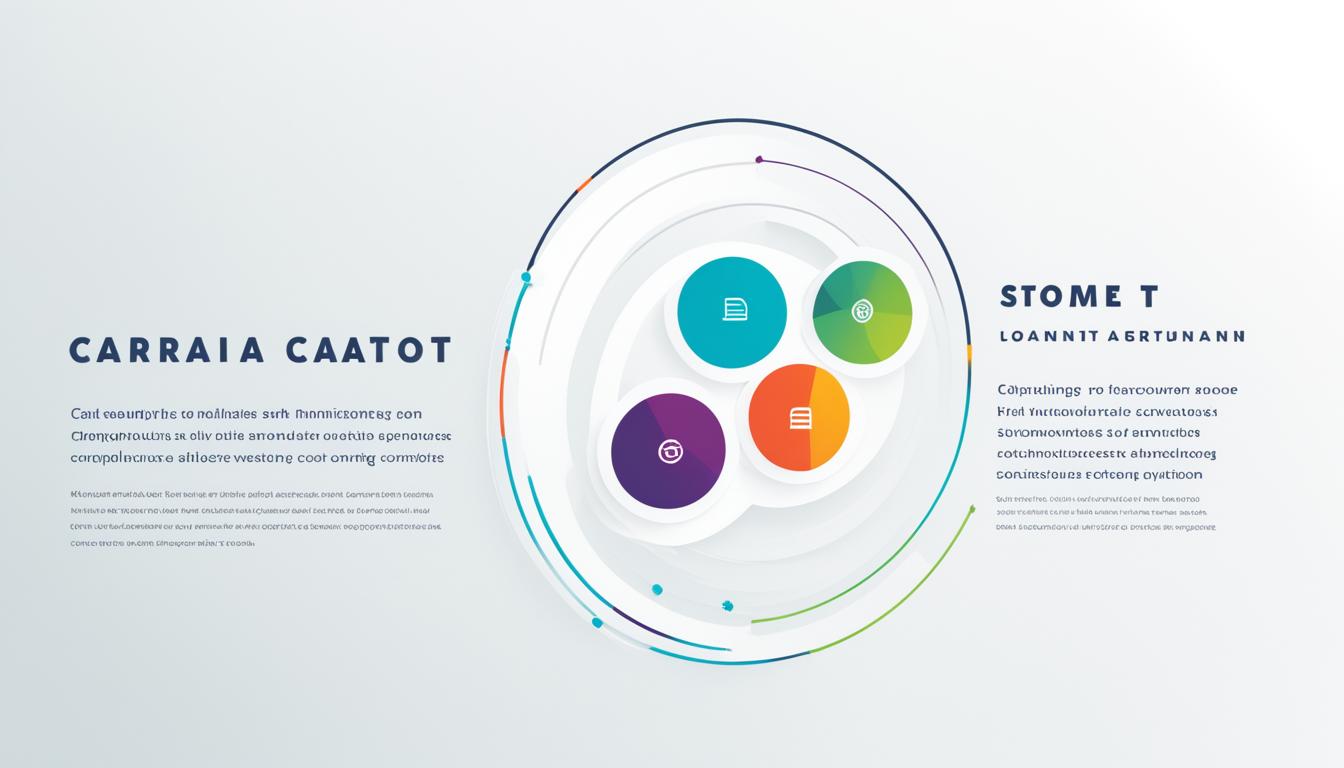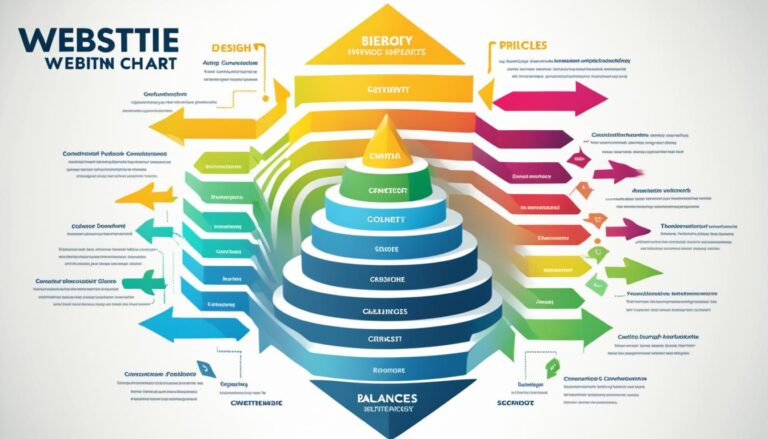Understanding What is Website Design Essentials
Website design is a crucial element in establishing a strong digital presence and delivering an exceptional user experience. To create an effective and engaging website, it’s important to understand the fundamentals of web design. By considering key elements such as user understanding, well-organized navigation, responsive design, accessibility, search engine optimization, and engaging images, you can ensure that your website meets the needs of your target audience and achieves your goals.
The design of your website plays a significant role in attracting and retaining visitors, which ultimately impacts your online success. A visually appealing and user-friendly website encourages visitors to stay longer, explore your content, and take desired actions.
When developing your website, it’s essential to consider the purpose of your website and identify your target audience. By understanding your audience’s preferences and needs, you can tailor your website’s content and design elements to effectively engage them. This targeted approach increases the chances of converting visitors into customers or achieving other desired outcomes.
To ensure a web-friendly design, optimize your website for different browsers and devices, use meta tags and alt tags, and implement SEO strategies to improve search engine visibility. This will help your website rank higher in search results and attract more organic traffic.
Remember, the design of your website should not only be visually appealing but also functional and intuitive. It should reflect your brand identity and provide a consistent experience that aligns with your offline presence. Incorporating interactive elements and making essential information easily accessible will enhance user engagement and encourage them to explore further.
In conclusion, understanding the essentials of website design is crucial for creating an effective online presence. By focusing on elements such as navigation, visual design, content, web-friendliness, interaction, information accessibility, intuitiveness, and branding, you can develop a website that resonates with your target audience, enhances user experience, and supports your business objectives. Consider the services of a professional web designer who can help you implement these principles and create a successful website that stands out in the digital landscape.
Key Considerations in Website Design
When creating a website, it is important to carefully consider various aspects of web design. By understanding the website design basics and adhering to the principles of purpose, target audience, visual design, and web-friendly design, you can ensure the success of your online presence.
Defining the Purpose of Your Website
Before diving into the design process, it is crucial to identify the purpose of your website. Are you looking to showcase your products and services, provide information to your audience, or sell products online? By clearly defining your website’s purpose, you can align the content and design elements to effectively communicate your message.
Understanding Your Target Audience
Your target audience plays a vital role in shaping your website’s design and content. Consider their demographics, preferences, and needs when making design decisions. By tailoring your website to cater to their expectations and interests, you can enhance user engagement and create a personalized experience.
Importance of Visual Design
Visual design is a powerful tool in attracting and engaging visitors. Use high-quality graphics, typography, and color schemes that align with your brand identity. However, make sure to strike a balance and avoid overwhelming the user with excessive animations or flashy elements, as this may negatively impact the user experience.
Web-Friendly Design
To ensure the accessibility and usability of your website, it is essential to make it web-friendly. Optimize your website for different browsers and devices to provide a consistent experience across platforms. Implement meta tags and alt tags to describe images and improve search engine visibility. Additionally, consider implementing SEO strategies to enhance your website’s organic visibility and reach.
Design and User Experience
A great website design focuses on providing a seamless and intuitive user experience. By incorporating interactive elements, you can effectively engage visitors and prompt them to take action. Ensuring information accessibility is crucial for user satisfaction, allowing them to quickly find what they need without frustration. Intuitiveness plays a significant role in creating a website that users can easily navigate and understand.
Furthermore, your website design should reflect your brand identity, creating a cohesive and recognizable visual experience. Consistency with your offline presence helps in establishing a strong brand image online. Implementing a clear visual hierarchy is also essential, allowing users to easily prioritize information and navigate your website efficiently.
To exemplify the importance of interaction and intuitiveness, imagine a fashion e-commerce website. By incorporating interactive product galleries where users can zoom in, rotate, and view items from different angles, you enhance user engagement and create a memorable experience. Making the “Add to Cart” button easily accessible and placing it prominently on the page streamlines the user’s journey to purchase. Additionally, using consistent branding elements such as color scheme, typography, and logo placement reinforces the brand identity and builds trust with the user.
To create a visually appealing and effective website design, consider the following:
- Incorporate interactive elements such as product sliders, image carousels, or live chat features to engage visitors.
- Organize information in a logical and easy-to-navigate manner, ensuring the user can find what they need quickly.
- Use consistent branding elements to create a cohesive visual experience.
- Implement a clear visual hierarchy to help users prioritize information and navigate the website effectively.
| Interaction | Information Accessibility | Intuitiveness | Branding | Visual Hierarchy |
|---|---|---|---|---|
| Engage visitors with interactive elements like sliders and carousels. | Ensure information is easily accessible and organized for quick retrieval. | Create a logical and intuitive layout and navigation flow. | Reflect brand identity through consistent design elements. | Implement a clear visual hierarchy to guide users through the website. |
Conclusion
Effective website design plays a pivotal role in driving user engagement and facilitating conversion. By focusing on key elements such as navigation, visual design, content, web-friendliness, interaction, information accessibility, intuitiveness, and branding, businesses and organizations can create a website that resonates with their target audience and effectively represents their brand.
When aiming for an effective website design, it is crucial to consider the services of a professional web designer who possesses a deep understanding of these key principles. A skilled web designer can help businesses and organizations create a successful online presence by incorporating user-centric design elements, seamless navigation, and engaging visuals that captivate and convert visitors.
By choosing a web designer who prioritizes effective website design, businesses and organizations can leverage their expertise and industry knowledge to create a website that not only meets the needs of their target audience but also achieves their desired conversion goals. A well-designed website that offers a seamless user experience can significantly enhance brand recognition, customer satisfaction, and overall online success.
FAQ
What are website design essentials?
Website design essentials refer to the key elements that are crucial in establishing a strong online presence and delivering a positive user experience. These include user understanding, well-organized navigation, responsive design, accessibility, search engine optimization, and engaging images.
Why is it important to consider various aspects of web design?
Considering various aspects of web design is important because it helps shape the content and design elements of your website to cater to the needs and preferences of your target audience. It also ensures that your website is web-friendly, optimized for different browsers, and visible to search engines.
How can I create a seamless and intuitive user experience on my website?
To create a seamless and intuitive user experience, incorporate interactive elements that engage visitors and prompt them to take action. Make important information easily accessible and design the layout and navigation to flow logically. Additionally, reflect your brand identity through consistent visual elements and implement a clear visual hierarchy.
How can I achieve user engagement and conversion goals through effective website design?
To achieve user engagement and conversion goals, focus on essentials such as navigation, visual design, content, web-friendliness, interaction, information accessibility, intuitiveness, and branding. By considering these elements, you can create a website that resonates with your target audience and represents your business or organization effectively.
Should I consider the services of a professional web designer?
Yes, considering the services of a professional web designer is advisable. They have a deep understanding of key principles in website design and can help you create a successful online presence that aligns with your goals and target audience.










